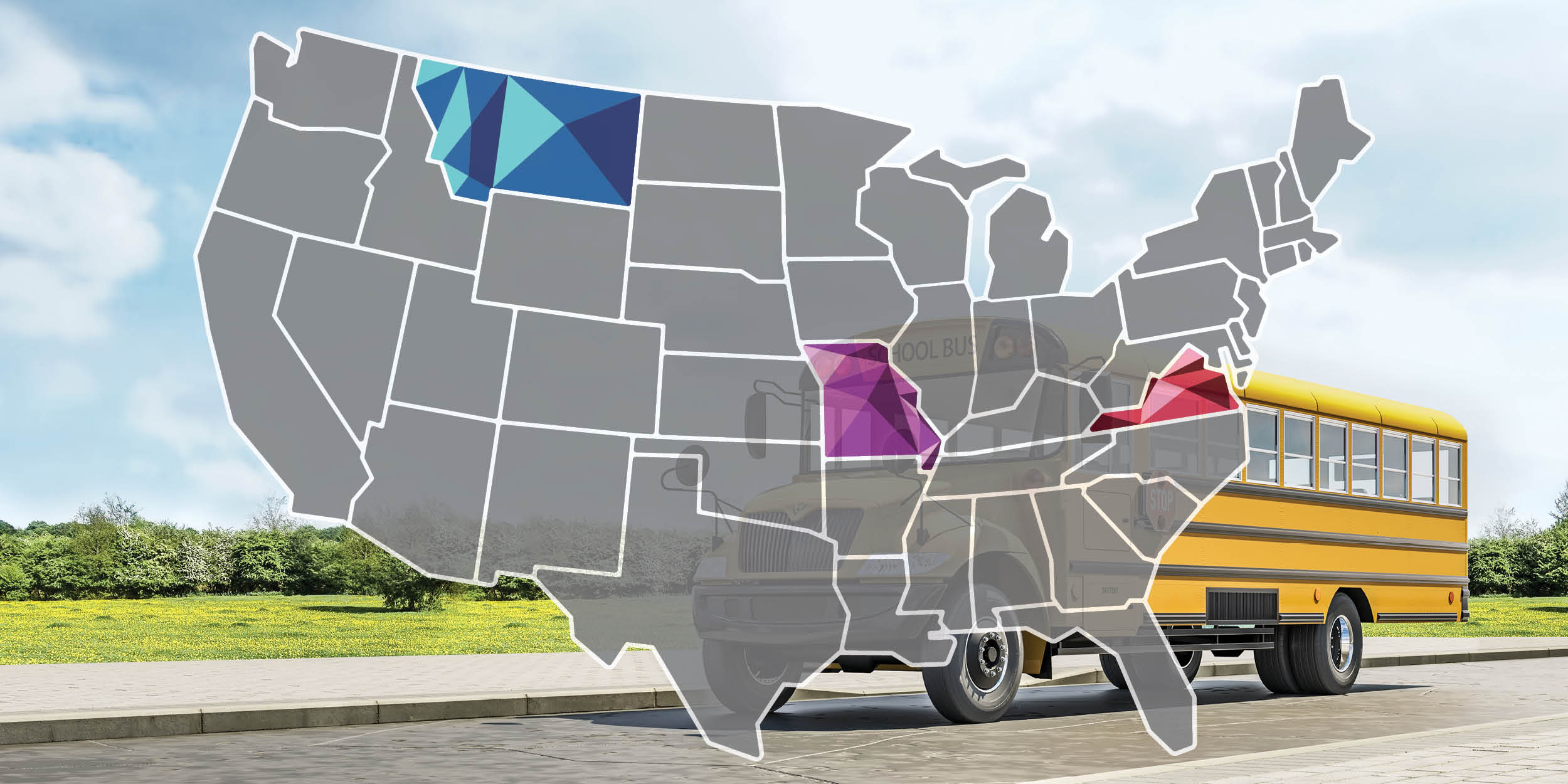About 1 in 5 school-age children experience serious mental health issues yet few receive services. In rural schools, geographic isolation and limited resources make receiving services even more difficult. The IES-funded National Center for Rural School Mental Health is addressing this challenge.
The 5 year, $10 million National R&D Center is supporting partnerships with a wide variety of rural school districts in three states (Missouri, Virginia, and Montana) to develop and test ways to support the mental health needs of their students. I recently spoke with Dr. Wendy Reinke, the Center’s director, about the unique mental health needs in the rural settings where the center is working and how she and her colleagues are approaching this work. 
Tell us a little bit about the rural communities you are partnering with in Missouri, Virginia, and Montana.
Each state provides a unique geological context that we anticipate will inform the tools and interventions we are developing for wide use in rural schools. For instance, Missouri sits in the middle of the country where half of the school districts are considered rural and another third or so are considered small towns. Virginia encompasses central Appalachia which struggles with issues of under-employment, mental health, and school dropout. In the northwest, rural residents are scattered across Montana’s 56 counties, 30 of which are classified as “frontier” counties with three or fewer persons per square mile. The tools and interventions we develop will need to be feasible and effective across these very different contexts.
What are the most common mental health challenges being faced in the different rural communities you are partnering with?
Part of the work of the Rural Mental Health Center will be learning more about the types of mental health challenges faced by rural communities. From my current work in Missouri’s rural schools, common areas of concern include youth with depression, anxiety, conduct problems, substance abuse, and suicidality. Identifying youth early can help to prevent or reduce the burden of these problems. Accordingly, we plan to not only offer interventions for youth facing mental health challenges but work with schools to prevent and identify early, youth who would benefit from supports.

The work you have planned for the center builds on prior IES-funded work. Tell us more about how this work provides a foundation for launching the work of the center.
A cornerstone of the Center is the use of an assessment tool that will allow schools to gather data to determine their needs for school-level prevention, group-based interventions, and individualized interventions. This tool was developed in partnership with six school districts (five of which are rural) and University of Missouri researchers. Through the IES partnership grant we were able to validate the measure and gather stakeholder input to improve the tool and the overall intervention model. These data collected using this tool will be linked to evidence-based interventions, several of which have been developed and evaluated through IES funding. It is very exciting to have the opportunity to pull all of these projects together to support our rural schools.
Much of your earlier research has been done in urban school districts. How did you become interested in research with rural schools? What would you recommend to other researchers interested in doing research with rural schools?
I grew up and attended school in a rural coal-mining town in Pennsylvania. When I moved to Missouri, I had access and opportunity in working alongside rural school districts. One recommendation, which I think goes for research in any schools, is to operate as a partner with them. For instance, the six school districts we worked with formed a Coalition, and we include the Coalition as co-authors on any publication or presentation that comes from this work. Further, we present with partners at conferences and report back findings to the community. I think an open and collaborative relationship gains trust, allowing for additional opportunities to conduct research alongside our school partners. Additionally, our ideas for studies are nearly always driven by the needs expressed by our schools based on the pressing challenges they report to us.
The Center also has a policy focus with work that will be led by your Montana partners. Tell us more about this aspect of the Center’s work and the types of policy issues the Center will address.
We will be working with rural school district partners across the three states to identify important issues facing rural schools. Dr. Ryan Tolleson-Knee from the University of Montana will be leading this initiative. At the Center kick-off meeting held in June, a subgroup of rural school partners interested in policy was formed. The plan is for this subgroup to develop a toolkit that can be readily used by public school personnel and state and national policymakers to improve outcomes for youth. One topic of interest is how might rural school districts partner with one another (similar to the Coalition described earlier) to maximize and share resources across the communities. Over the next five years, the toolkit will expand and connect to issues faced by our rural schools.
Written by Emily Doolittle, NCER Team Lead for Social Behavioral Research